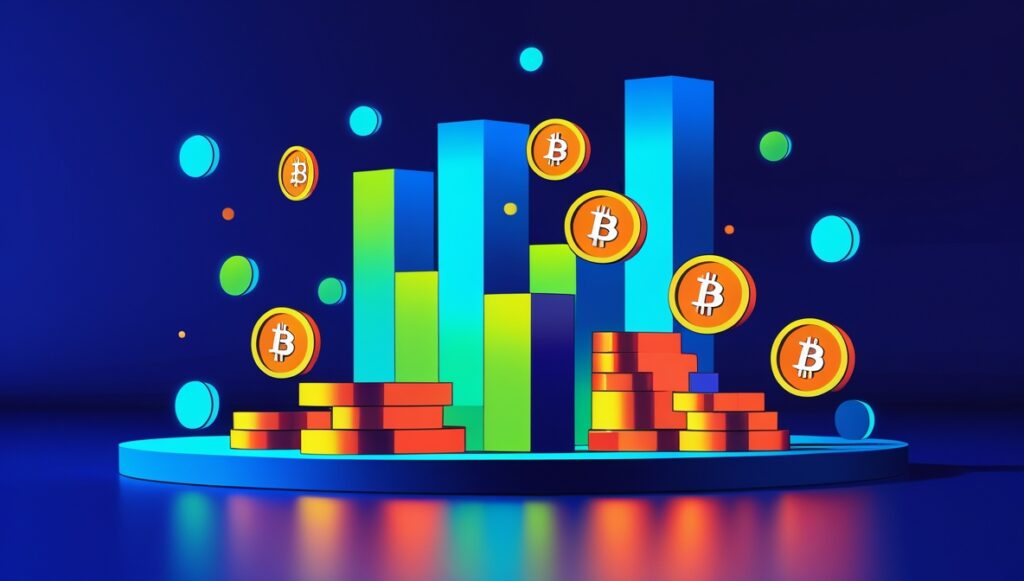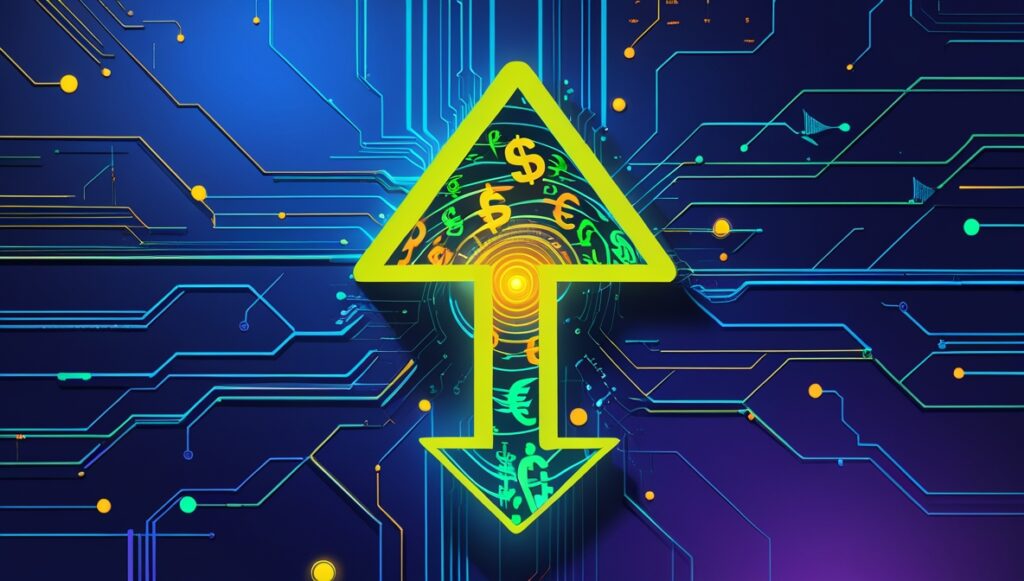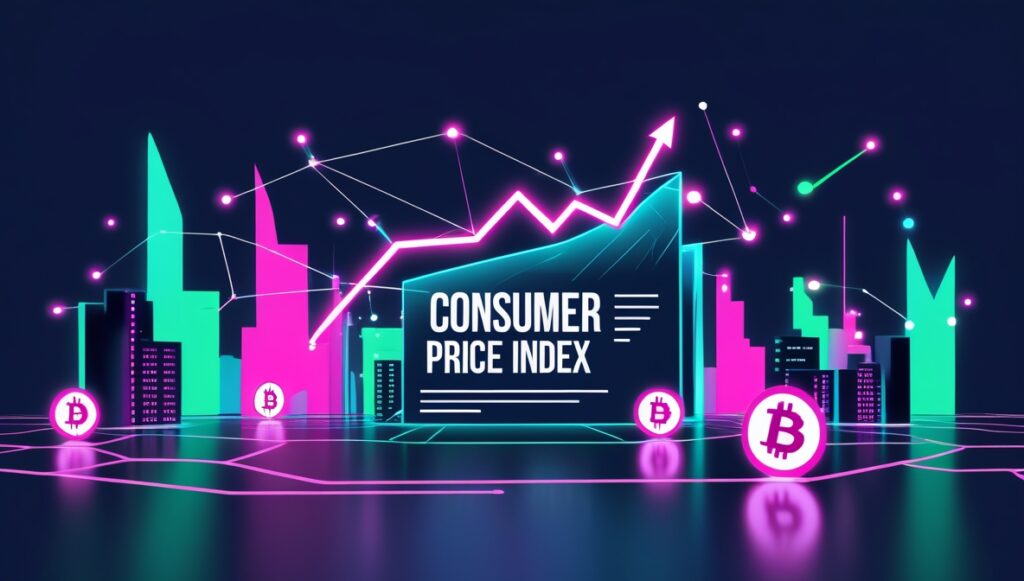Table of Contents
Inflation and Cryptocurrency: How Rising Prices Impact Digital Assets
Prices are rising, wages are lagging, and savings are shrinking—inflation has become an unavoidable part of the modern economy. In just the last three years, Americans have faced record spikes in gas, food, and housing costs, while the dollar has lost roughly 10% of its purchasing power. Amid this turmoil, millions are searching for ways to protect their money from erosion. Enter cryptocurrency—a digital phenomenon hailed by some as a “lifeline” and dismissed by others as a “speculative bubble.”
But can Bitcoin and its peers truly act as a shield against inflation? Why do some crypto assets rise in value as traditional currencies falter, while others crumble to dust? And how can everyday investors distinguish resilient projects from inflationary traps?
In this article, we’ll explore how inflation impacts the crypto market, which coins can weather economic storms, and why even in the decentralized world, nothing is black and white. You’ll learn:
- How supply limits make Bitcoin “digital gold”;
- Why stablecoins might be riskier than they appear;
- What mistakes newcomers make when fleeing inflation with crypto.
Ready to rethink your views on money? Let’s dive in.
What Is Inflation?
Inflation is a sustained increase in prices for goods and services, causing money to lose purchasing power over time. For example, if inflation is 5% annually, $100 today will buy 5% less in a year.
Causes of inflation:
- Money printing — When central banks (e.g., the U.S. Federal Reserve) issue new currency, the excess supply devalues each unit.
- Demand surges — Prices rise when demand outstrips supply.
- Resource cost increases — For instance, rising oil prices drive up transportation and production costs.
In traditional economies, 2–3% annual inflation is considered normal. However, in 2022–2023, U.S. and EU inflation hit 8–9%, sparking a cost-of-living crisis.
How Does Inflation Affect Cryptocurrencies?

Cryptocurrencies are an alternative to fiat money, but their relationship with inflation is complex. Let’s explore three key aspects.
1. Cryptocurrencies as Inflation Hedges
Many investors view Bitcoin and similar cryptocurrencies as “digital gold” — assets that retain value as fiat currencies depreciate.
Why this works:
- Limited supply: Bitcoin’s maximum supply is 21 million coins. New BTC is created only through mining, with issuance halved every four years (“halving”). After the 2024 halving, Bitcoin’s inflation rate dropped to ~0.8% annually — lower than the dollar or euro.
- Decentralization: Cryptocurrencies aren’t controlled by governments that can print money endlessly.
Example: In 2020–2021, when the Fed printed trillions to counter COVID-19’s economic impact, Bitcoin surged from 7,000 to 69,000 as investors sought inflation protection.
2. Inflation Risks Within the Crypto Market
Not all cryptocurrencies are inflation-proof. Some projects intentionally use token issuance to incentivize users.
Examples:
- Ethereum: Pre-Proof-of-Stake (2022), ETH had ~4.5% annual inflation. Now it’s ~0.5%.
- Dogecoin: Launched as a joke, its supply is infinite — 5 billion new DOGE enter circulation yearly.
- Stablecoins: USDT, USDC, and others mirror the dollar’s inflation rate.
The danger: If token issuance exceeds demand, prices collapse. For example, Terra Classic (LUNC) lost 99.99% of its value in 2022 due to hyperinflation.
3. Macroeconomic Impact on Crypto
Traditional inflation indirectly affects cryptocurrencies through:
- Fed rate hikes: To curb inflation, the Fed raised rates to 5.5% in 2023, making loans costlier and pushing investors toward bonds over risky assets like crypto.
- Reduced purchasing power: As prices rise, people invest less. In 2022, inflation and recession wiped $2 trillion from crypto’s market cap.
- Demand shifts: In hyperinflation-hit countries (Argentina, Turkey, Nigeria), citizens increasingly use crypto for savings.
How Inflation Is Reshaping Crypto

The Rise of Deflationary Models
Projects are adopting token “burn” mechanisms to reduce supply:
- BNB: Binance burns tokens quarterly based on trading volume.
- Shiba Inu: In 2023, developers introduced a burn mechanism for SHIB per transaction.
2. Bitcoin as “Anti-Inflation Asset”
By 2140, Bitcoin’s issuance will stop, making it fully deflationary. Already, it’s compared to gold:
- 60% of Bitcoin hasn’t moved in over a year — holders treat it as a long-term store.
- Companies like MicroStrategy and Tesla hold BTC in their reserves.
3. Stablecoin Risks
If dollar inflation rises, stablecoins (USDT, USDC) will depreciate. This could boost demand for decentralized alternatives, such as stablecoins pegged to commodities (oil, gold).
How Investors Can Hedge Against Inflation

- Choose coins with capped supplies: Bitcoin, Litecoin, Binance Coin.
- Avoid tokens with unlimited inflation: Dogecoin, projects without burn mechanisms.
- Use stablecoins cautiously: Dollar inflation erodes their value.
- Diversify your portfolio: Include stocks, gold, real estate.
- Monitor macro trends: Fed decisions, unemployment rates, and CPI directly impact crypto.
Impact of Interest Rate Hikes
Central banks raising rates makes borrowing costlier, reducing demand for loans.
- Consumers: Higher mortgage/auto loan costs cut purchasing power, prompting delayed spending or increased savings.
- Businesses: Expensive loans lower investment appeal, slowing economic growth as expansion projects decline.
Fiscal Policy & Inflation Control
Governments use taxes and spending adjustments to manage inflation:
- Tax hikes: Reduce disposable income and business profits, curbing demand and easing price pressures (but risk public backlash).
- Spending cuts: Trimming programs or infrastructure investments lowers demand but may stifle economic growth.
Inflation Assessment Using Price Indices

We have discussed methods for combating inflation, but how do we determine when actions are necessary? This requires accurately measuring inflation. The primary way to assess inflation is by tracking changes in price indices over a specific period. In most countries, the Consumer Price Index (CPI) is used as the main indicator of inflation.
The CPI reflects changes in the prices of a wide range of consumer goods and services, calculating an average value to evaluate the “basket” of goods. This process is conducted periodically, and new data is compared with previous data. For example, the U.S. Bureau of Labor Statistics (BLS) and similar organizations gather information on prices from stores across the country to provide the most accurate data.
If the CPI is 100 points in one year and 110 points two years later, it indicates a 10% price increase over that period.
Conclusion
Inflation is the enemy of fiat money but could benefit cryptocurrencies. Bitcoin and similar assets offer protection against fiat devaluation — but only if their supply is predictable and demand steady. However, not all crypto is safe: tokens with unchecked issuance risk becoming the next Zimbabwean dollar.
Investor rule: Always check a token’s issuance model. If supply is infinite and demand stagnant, it’s an inflationary time bomb.
Sources used to write the article:
Binance
Wikipedia



